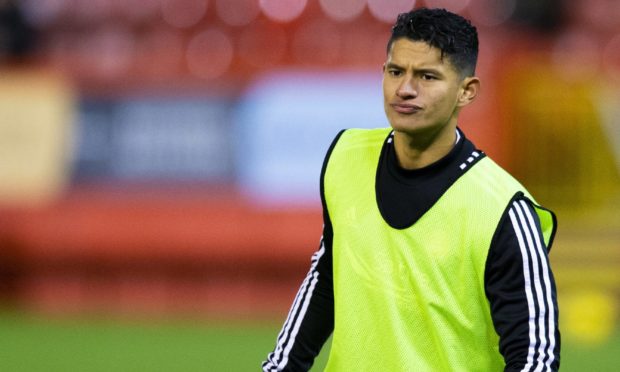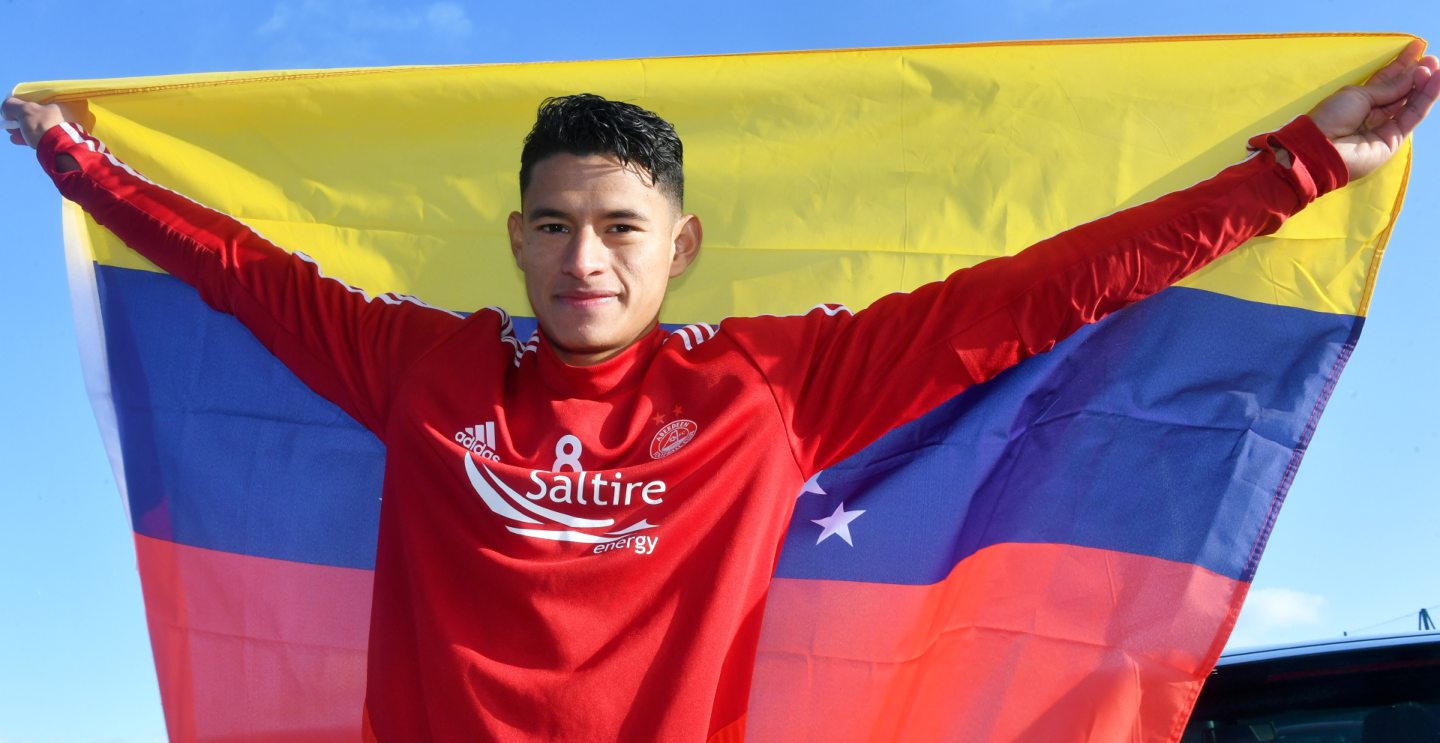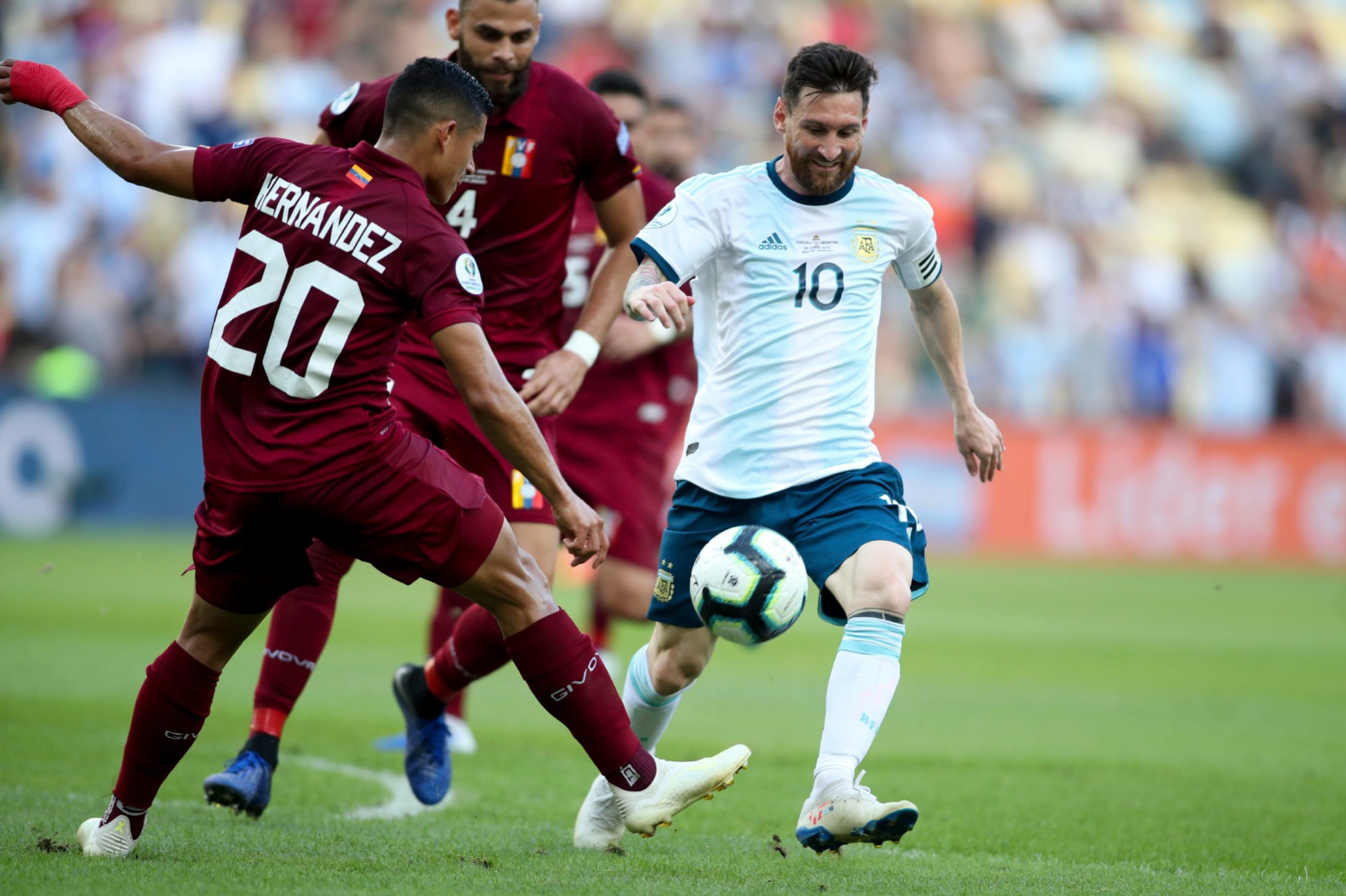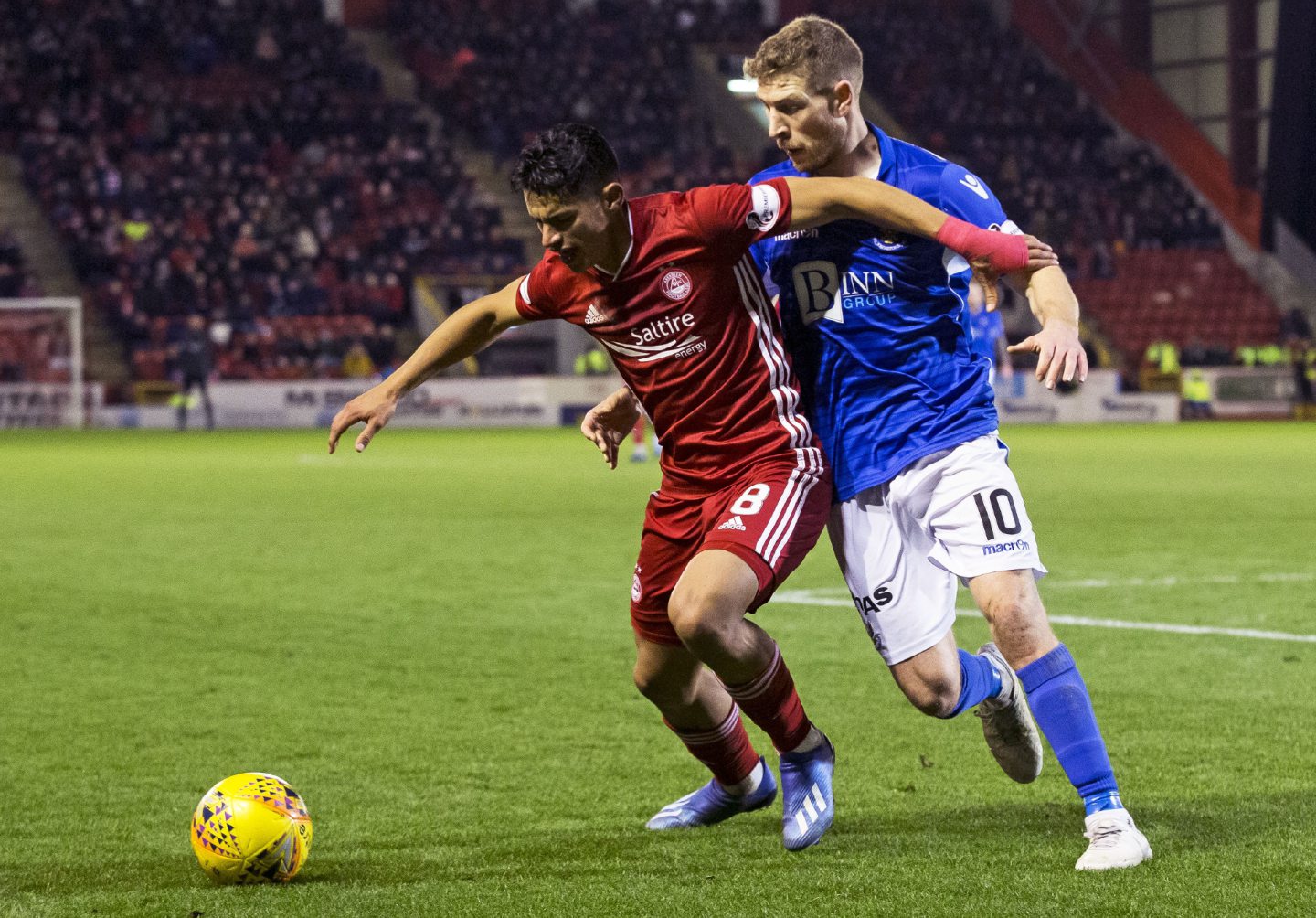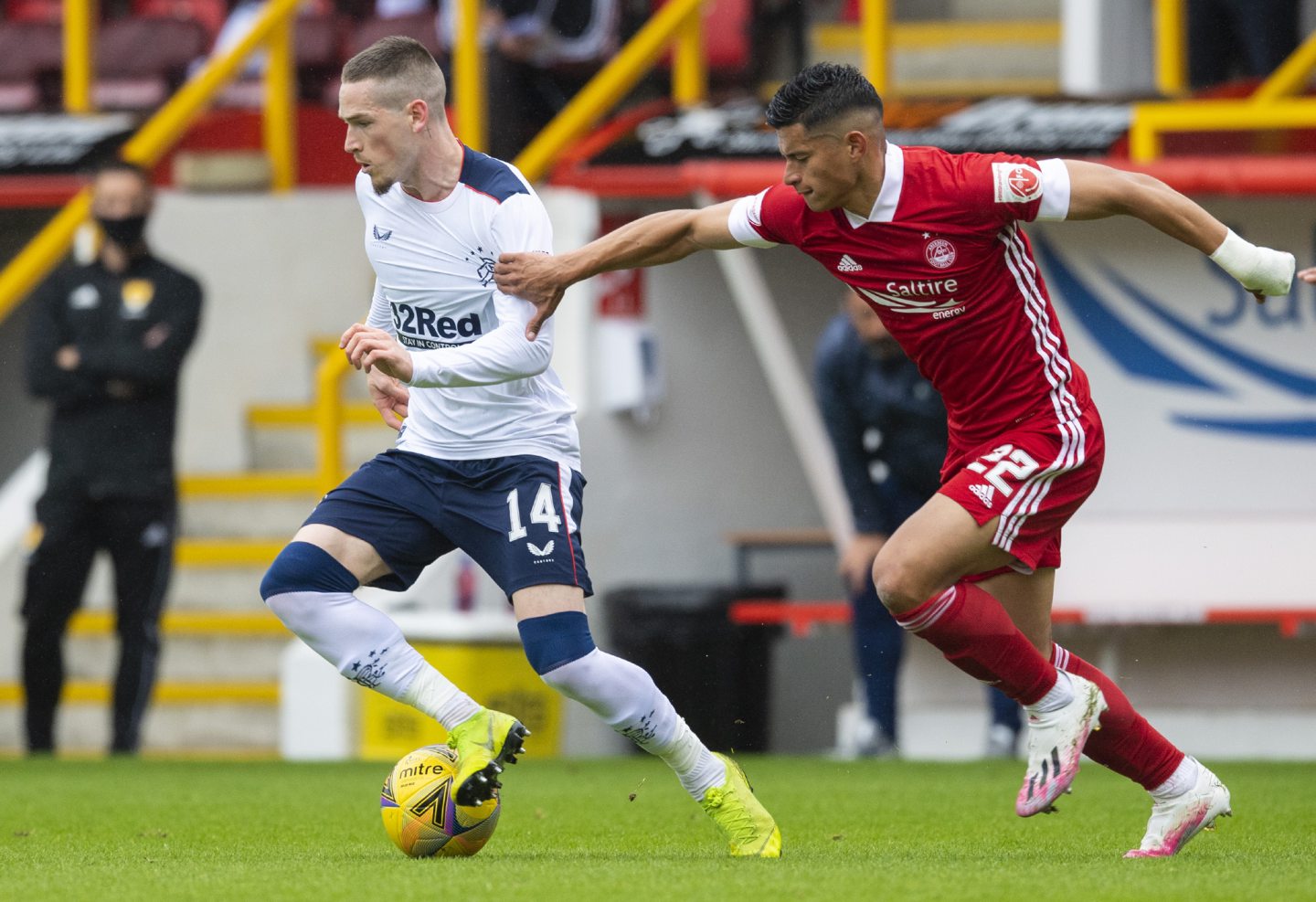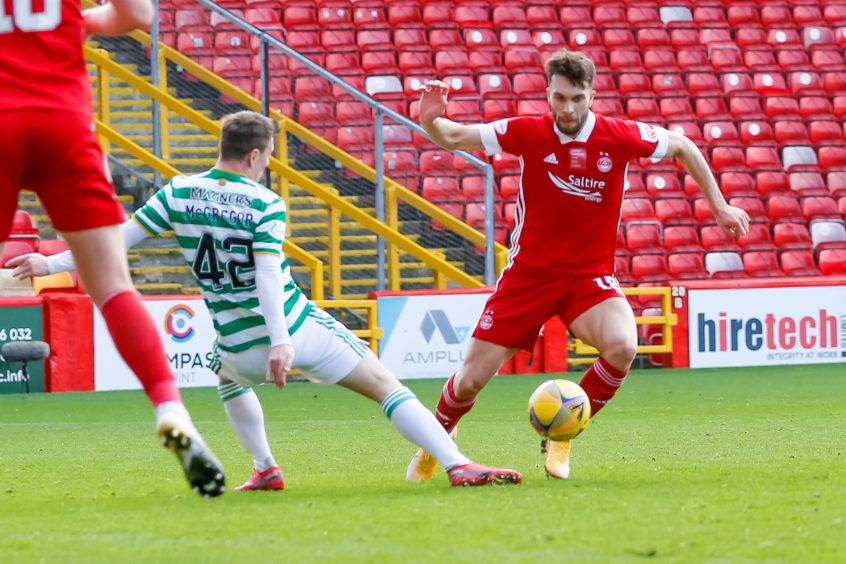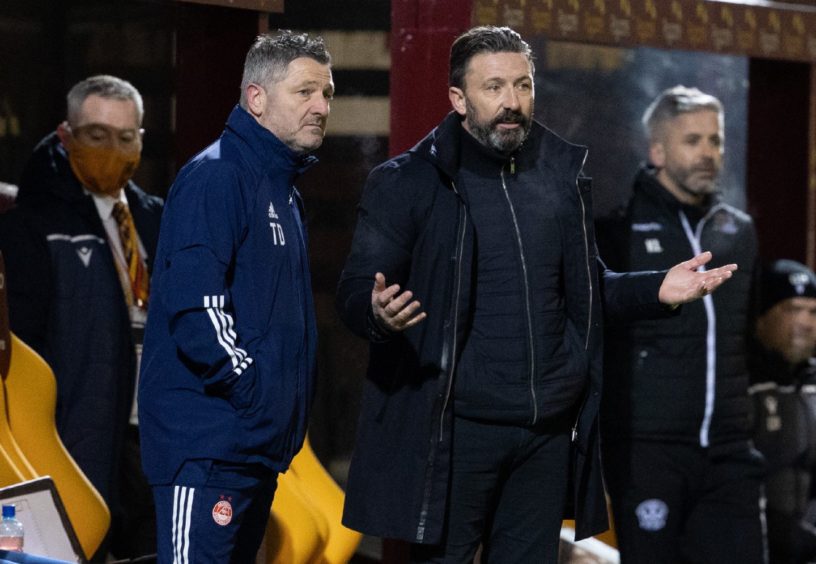With the new year fast approaching, we’ve decided to explore the football issues which are close to the Red Army’s heart this festive period.
In this final installment of what has been a five-part series, we ask another of the burning questions followers of the Dons will want to know the answer to for 2021 – Why did the Ronald Hernandez experiment fail and what can Aberdeen learn from it?
In case you’ve forgotten (you probably haven’t) … Who is Ronald Hernandez?
Venezuelan international right-back Hernandez, 23, was a surprise signing on deadline day last January.
Maybe “surprise” is underplaying the nature of the arrival. In the small pond of Scottish football, there are normally rumours, tip-offs and then unconfirmed reports long before a transfer is completed, and sportsdesks across the nation are only waiting for official club confirmation so they have some quotes from the manager and/or player to put in the next day’s paper or add to a story already online.
Hernandez’s move to the north-east was the antithesis of this – it came totally out of the blue. And he certainly didn’t fit the profile of recent Aberdeen signings.
The £850,000 fee the Dons (or even chairman Dave Cormack himself) are understood to have paid to secure the player from Norwegian Eliteserien side Stabaek – on a four-and-a-half-year deal – told us two things:
- First, new chief Cormack, a Reds fanatic who had just ascended to the top job, was clearly willing to put a hand in his pocket, outlaying Aberdeen’s biggest fee for a player since the mid-1990s.
- Secondly (although also related to Georgia-based Cormack), was the influence new “strategic partners” American Major League Soccer-side Atlanta United had on the transfer. According to figures at Aberdeen, their scouting network, and links to Venezuelan agents and players, was what allowed the Dons to move away from the British talent they have mostly signed during boss Derek McInnes’ time as manager to make this left-field addition.
McInnes made the input of Atlanta clear in his first interview about Hernandez, although he suggested the full-back wasn’t a player the MLS club were interest in signing themselves: “He’s a player we’ve been monitoring for a while.
“He first came to our attention six months ago and we’ve kept tabs on him.
“It’s one of the leagues we’ve been concentrating on, the Norwegian league, and we thought it was going to be a challenge to get him out of there.
“It shows you where we are, with the collaboration with Atlanta, as he showed up on their recruitment system and jointly we’ve got to know him better.
“Atlanta have several Venezuelan players and that allowed us to make inroads in the possibility of bringing him to Aberdeen. We felt that to get him here we maybe needed that help with the Venezuelan contacts that Atlanta clearly have.
“We were telling them there are certain positions we are keen to address over the next wee while.
“He was on the same system as one of interest for them.
“I do think that having the ability to contact the agent direct and try to get things moving along helped in this. It is a great example of how this can work.
“We are going to see loads of benefits (from the partnership) and that is part of the reason why this is one that we have been able to pull off.”
An urgent Google, which was the first step for both journalists and fans, showed Hernandez had pedigree – 15 caps for his country (at that point), with one of those coming deep in the Copa America against Argentina, pictures of him battling with global stars like Barcelona’s best-player-ever-contender Lionel Messi and Manchester City’s Sergio Aguero.
In addition to this, there was also an appearance in the final of the Under-20 World Cup, with footage of Hernandez’s contribution during the competition available on YouTube:
The Red Army were excited.
Hernandez himself said all the right things in his first interview with the press as an Aberdeen player, emphasising his desire to carve out a career at the top of the European game one step at a time.
He said: “For me this is our dream as South American players, to come to Europe.
“Roberto Rosales is our right-back (Venezuela). He came to Europe at a young age from Venezuela.
“He came to Belgium and then to Holland and Spain, so he is a good character to follow.
“I see him as an example to me and of course I would like to follow him because he’s had a good career.
“But I try to have a different career. We can’t always go the same way.
“My main feeling when I’m here is to help the team and be myself on the pitch.
“I need to work hard and show good energy on the right side.
“I need to be up and down every day. That’s what I’m looking to do.”
Fast forward almost 12 months and, after such a big headline-grabbing outlay, Hernandez has played just 220 minutes of football for Aberdeen, with Dons boss McInnes now on-record (from the club’s AGM) suggesting he will be moved on next month.
It’s all gone wrong and supporters are wondering why, with many convinced Hernandez – having been on Atlanta’s system and presumably fitting their South American-stuffed roster – will head to the Dons’ MLS partners next.
McInnes and Cormack have both pointed to the bad luck of the Covid-19 pandemic, which has kept Hernandez separated from his wife and child in Venezuela for a year, as a major contributing factor, although a desire to get more attackers into the Aberdeen’s new three-at-the-back shape has also been blamed.
How much has Ronald Hernandez played for Aberdeen?
When he signed for the Dons on January 31, there was an acceptance Hernandez was not in top shape, because his season with Stabaek – for whom he made more than 50 appearances – had finished two months earlier on December 1.
He went straight into the Aberdeen squad, but was an unused substitute in the 0-0 draw with Rangers at Ibrox, before making his debut in the 1-0 loss to St Johnstone at Pittodrie on February 5.
On his first appearance, Hernandez ran out of steam pretty quickly after a lively start and was taken off after 66 minutes.
Before coronavirus curtailed the 2019/20 term, Hernandez would make just one more appearance – a four-minute cameo in the 3-1 Pittodrie win against Hibs on March 7.
An inauspicious start. Still, there remained a feeling, after a proper pre-season in his new surroundings, Hernandez would be ready to kick on in the current campaign.
However, he has played just four times for Aberdeen this season.
He started the 1-0 opening day home loss to Rangers, joining the rest of the Reds’ team in offering very little going forward (none of that “up and down” he demanded of himself in that first interview), but he gave a fine enough performance defensively.
The Venezuelan was taken off at half-time of the 1-0 win at St Johnstone on August 20 after again struggling to make an impact.
His last two appearances came in the 3-0 victory over Ross County in Dingwall on November on September 27 and the 4-0 Ibrox hammering to Rangers on November 22, with Hernandez playing less than 10 minutes at the end of both matches.
It’s safe to say Hernandez, not unexpectedly, has not shone in the short bursts of action he has had for Aberdeen. He has looked a little lightweight in moments of contact, been a bit slower, less attacking than expected and his crossing hasn’t been accurate enough.
But players need to be playing games regularly to reach their top level, and he has not. Plenty of fans and some our of own writers have suggested the main problem with Hernandez’s time at Pittodrie is he simply hasn’t been given a prolonged chance to build form and momentum in competitive matches.
When he has been sent on, from the start or as a late sub, it’s not like there have been egregious errors, though, so the answer to the mystery of Ronald Hernandez’s current situation must lie on the training pitch.
So why hasn’t signing ‘coup’ Ronald Hernandez got more game time?
Let’s go back to the first interview McInnes gave about Hernandez, where he talked up his “speed and creativity”, as well as all the other qualities which he said convinced Aberdeen to bring him to Pittodrie.
The Reds manager said: “He’s an attacking full-back, can play as a wing-back and plays like a winger in the opposition half.
“Fans will like Hernandez – he’s got a fair bit of speed about him and he’s an exciting player.
“We’ve paid a fee to get him here and part of the reason we do that is because of his age.
“We think he is a player that is going to improve. We get him into the team and hopefully he realises that full potential for us.
“He’s a young player, but has done enough in the last couple of seasons to suggest he’s going the right way.
“He’s bright, eager, fully aware of British football. He’s a boy who’s eager to get started and make an impression
“It’s a coup for us to get him here.”
In this initial interview, McInnes certainly seemed to be excited by Hernandez’s abilities as an attacking modern right-back, which on face value seems perfect for the three-at-the-back system Aberdeen have been playing most often this season.
But, while fitness may have been an issue when he first arrived and contributed to the lack of immediate impact Hernandez made on the team, he now still finds himself behind the likes of veteran Shay Logan and winger Connor McLennan in the right-side-of-defence pecking order. Midfielders Ryan Hedges and Ross McCrorie have also played at right-back this term due to injuries and other issues.
There may be one straightforward reason why McInnes prefers those players to Hernandez. The truth of the matter may be the manager now doesn’t think he’s good enough, in either attack or defence, from watching him up close in training and doesn’t have the capacity to “improve” he once thought he did.
This is a tough one for fans to accept, because they can’t see what goes on behind closed doors at Cormack Park.
McLennan – although an attacker by trade – showed in the second half of the 3-3 draw with Celtic at Pittodrie he can be a real threat from wing-back and help Aberdeen break an opposition press with his speed.
Logan may be coming towards the end of his career at 32 and less able to fly up the wing than he once could, but McInnes has worked with him for seven years and trusts him to do his job defensively.
The Dons coaching staff think Hernandez lacks both the attacking abilities they get from playing out-and-out forwards like McLennan or Hedges on the right, and the defensive solidity they get from Logan or versatile central midfielder McCrorie.
At the start of the new season, Dons boss McInnes suggested he was being patient with Hernandez, saying: “It has been a challenge for him, but he has showed a willingness to do well and the good thing for me is that he has not missed a beat in training.
“It has been tough off the pitch with his family out of the country, but that has allowed him to concentrate solely on his football.
“He is desperate to do well, but we have to remember he is still young.”
This patience has clearly run out over the first part of the 2020/21 campaign.
Of course, plenty of players have looked good at one club, then struggled to adapt to life in a different league.
Has homesickness held Ronald Hernandez back?
What about the mention of homesickness and the impact of being away from his family? Is this the simple heart of the matter in why Hernandez hasn’t reached a level of performance to convince his manager to give him a regular run?
Aberdeen had been trying to get Hernandez’s family across from Venezuela before the Covid-19 lockdown, which put their move to Scotland on hold, meaning he’s been in the unfamiliar north-east alone for the guts of a year.
The homesickness problem came up again before a recent international break where the defender was heading away with his national team.
McInnes said: “Ronny is in the (Venezuela) squad for games against Colombia and Paraguay.
“We have to hope he has that dispensation which we have for travelling here when he gets there, but I’m not sure how that will help Ronny, given he hasn’t seen his wife and family for nine months.
“He’ll be wanting to jump ship as soon as he gets there.
“The boys have been winding him up, but I think he is glad to be closer to his family and get the chance to play for his country in two very important games.
“Hopefully, Ronny can get a wee boost by getting involved, but whether he gets to see his family I don’t know.
“Hopefully that will be the case, but we’ll make sure he is well looked after when he comes back to us.”
What can Aberdeen learn from the Ronald Hernandez situation?
It has to be said, the best option for Hernandez – if he’s not playing and it is the case he is missing his family to a degree it’s preventing him performing – is certainly to find a club closer to home. Aberdeen say there are plenty of potential options, so hopefully Hernandez finds the right move to get his career going again.
The Reds and/or the player clearly feel, even with three-and-a-half years left on his deal, it’s not worth exploring a loan move to get him this regular action.
Of course, we will eventually hear Hernandez’s account of the last 11 months, which may shed more light on what went wrong with his move to the Dons, and time will tell whether there is a player in there who the Red Army have been robbed of.
Whether the Atlanta move supporters expect comes to pass or not remains to be seen. It ticks the “closer to Venezuela” box, which could help Hernandez find his best form, which he’ll need to do, as it’s still going to be tough to break into an MLS team after a year of not breaking into a Scottish Premiership side.
In terms of what Aberdeen as a club can learn from the Hernandez experiment, though…
It was impossible, of course, for the Pittodrie outfit to predict they would be unable to bring Hernandez’s family to the Granite City, and the unsettling effects this would have on him.
The main lesson might be one of looking closer and for longer at any big-money addition, given the current finances of Scottish football and how rarely Aberdeen have spent so much on a player.
Has it not become clear, although Hernandez is an international, he isn’t a player who McInnes thinks is good enough to play a certain style of football for the Dons in the Premiership?
We can say he should’ve been given more time to improve, but if the manager, from watching him up close, doesn’t think he will reach a suitable level, it was never going to happen.
Although he was on the club’s radar “for six months”, how closely was he watched?
Of course, the move to three at the back and McInnes’ preference for speed and creativity at wing-back was also noted as a reason Hernandez’s move to Aberdeen didn’t work, but – as I’ve said above – if the Dons manager got the player he thought he was getting in that first interview, there’s no reason why the Venezuelan couldn’t play in the current system.
Perhaps better scouting is required next time before taking such a large punt on a player who hasn’t played the Scottish game. This wasn’t a free transfer or a nominal sum spent after all.
Dave Cormack’s words from after the AGM about deciding to pull the trigger on the what was a statement signing maybe suggest they jumped in two-footed on the deal, because they were scared of losing a potential player (and maybe a lucrative asset) to other clubs: “We were aware of the player, highly talented.
“Other clubs were after him and we have certainly felt it was important for us to spread our wings related to scouting and bringing other players in.”
